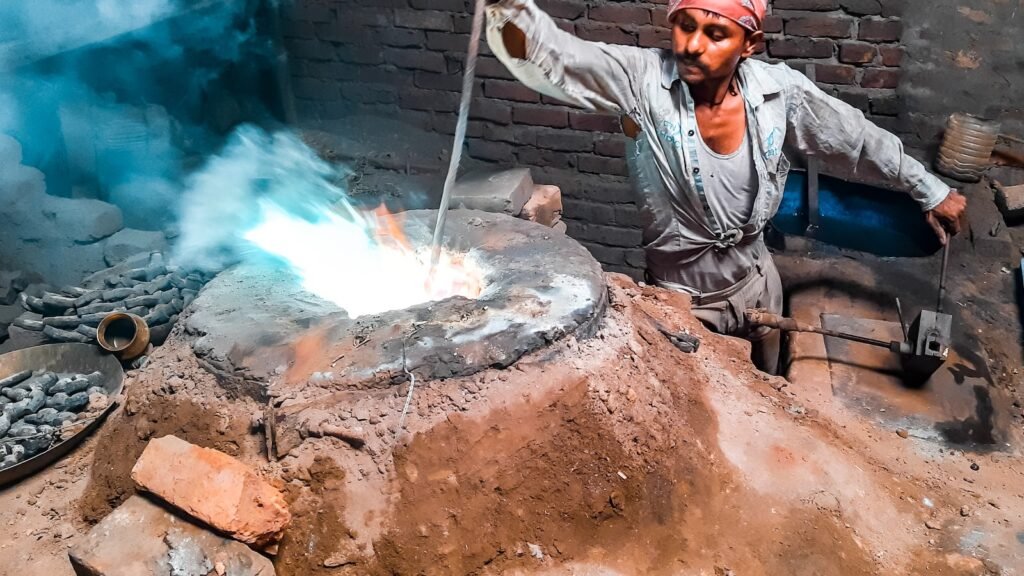Metal stamping, a cornerstone in the manufacturing world, often raises questions about its complexity. Is it a challenging process, or is it something that’s been simplified over the years? Let’s dive into the intricacies of metal stamping to uncover its true nature.
Metal stamping, at its core, involves pressing metal sheets into specific shapes using specialized tools. While the basic concept might sound straightforward, the process can be complex, depending on the precision, material, and design requirements. Factors like metal type, thickness, and the intricacy of the design can influence the difficulty level.
To truly grasp the depth of metal stamping’s complexity, it’s essential to explore its various facets. Let’s delve into the factors that determine its difficulty and the innovations that have streamlined the process.

The Variables of Complexity
Metal stamping, while a foundational process in manufacturing, isn’t a one-size-fits-all technique. Its complexity varies based on several factors, each introducing its own set of challenges. From the type of metal being used to the intricacy of the desired design, these variables play a pivotal role in determining the difficulty of the stamping process.
Material Properties
Every metal, be it aluminum, steel, copper, or brass, possesses distinct characteristics. These properties, such as hardness, malleability, and tensile strength, directly influence the stamping process. Harder metals, for instance, demand greater force during stamping, often requiring hydraulic or mechanical presses to achieve the desired shape. On the other hand, softer metals, while easier to shape, are more susceptible to tearing or warping if not handled with precision. Thus, understanding the properties of the chosen metal is crucial to ensure a successful stamping process.
Design Intricacy
The complexity of the design is another significant determinant of the stamping process’s difficulty. Simple designs with broader shapes might be easier to produce, but intricate patterns or designs with fine details present a challenge. Such designs often necessitate the use of specialized dies and tools, ensuring every detail is accurately captured. Additionally, complex designs might require multiple stamping stages, each focusing on a specific aspect of the design. This multi-stage process ensures that the final product is both aesthetically pleasing and functionally sound.

Technological Advancements
In the realm of metal stamping, technology has been a game-changer. Over the years, the introduction of cutting-edge machinery and software solutions has significantly streamlined the process, making it more efficient and precise. These advancements have not only simplified complex tasks but have also opened doors to new possibilities in design and production.
Modern Machinery
The evolution of machinery in the metal stamping industry has been nothing short of revolutionary. Gone are the days of manual presses and rudimentary tools. Today’s machines, equipped with hydraulic and pneumatic systems, can exert immense force with pinpoint accuracy. This ensures that even the hardest of metals can be stamped with ease. Furthermore, many of these machines come with automated features, allowing for mass production without compromising on quality. The integration of sensors and feedback systems ensures that any discrepancies in the stamping process are immediately detected and corrected, ensuring consistent results every time.
Computer-Aided Design (CAD)
The introduction of CAD software has transformed the design phase of metal stamping. Designers can now create detailed 3D models of the desired product, visualizing every curve, edge, and detail. This digital representation allows for thorough analysis and testing, ensuring that potential issues are identified and addressed before the actual stamping begins. Moreover, CAD software facilitates seamless communication between the design and production teams, ensuring that the stamped product aligns perfectly with the envisioned design. By simulating the stamping process in a virtual environment, errors are minimized, leading to faster production times and reduced wastage.

Skill and Expertise
While technological advancements have undeniably enhanced the metal stamping process, the human touch remains irreplaceable. The expertise and skill of craftsmen play a pivotal role in ensuring the success of each stamping project. Their knowledge, honed over years of experience, combined with their adaptability to new techniques, is what sets apart a good product from a great one.
Craftsmanship
Machines, no matter how advanced, are tools that require a skilled hand to guide them. In the world of metal stamping, the craftsman’s expertise is invaluable. Their understanding of metals, their intuition in predicting how a material will react, and their ability to make on-the-spot adjustments are skills that machines cannot replicate. An experienced craftsman can gauge the quality of a stamped product by its feel, its sound, and even its smell. Their hands-on approach ensures that each piece is not just technically accurate but also carries a touch of artisanal quality.
Training and Learning
The metal stamping industry, like all sectors, is in a state of constant evolution. New techniques, materials, and technologies emerge regularly. For professionals in the field, continuous learning is not just beneficial—it’s essential. Training programs, workshops, and seminars allow craftsmen to stay abreast of the latest developments. By mastering new techniques and familiarizing themselves with the latest machinery, they can tackle a wider range of projects with confidence. Moreover, a commitment to lifelong learning reflects a dedication to excellence, ensuring that the craftsman remains relevant and in demand in an ever-evolving industry.

Conclusion
While metal stamping can present challenges, advancements in technology, combined with skilled craftsmanship, have made it more manageable over the years. It’s a blend of art and science, where precision meets creativity.



